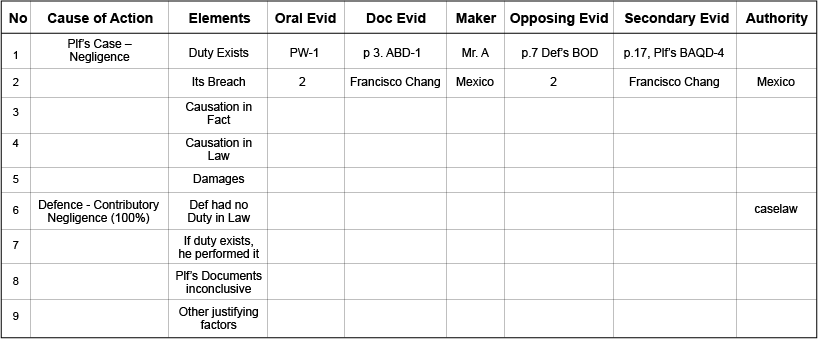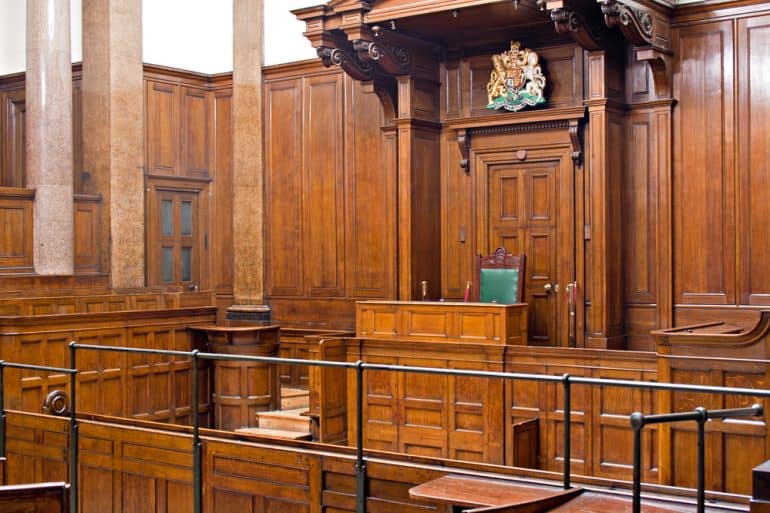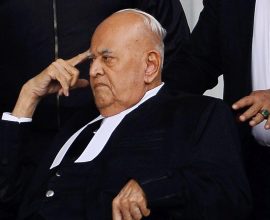How to succeed at the Trial Court
Are there tricks to be more successful at trial work? There are. The 1st is Deep Preparation. The 2nd is a Chronology. The 3rd is a Trial Chart. Read on.
This article is for trial lawyers.
First Rule: there are no shortcuts to a successful trial.
Second Rule: Preparation is everything. If you do not prepare, or fail to prepare the right way, you’ll fail.
Here are some techniques that I have learned over time.
These apply to trials in both civil and criminal courts.
As always, caveat emptor!
Tip-1: A Chronology is a crucial tool
The human mind is hard-wired to remember events in a certain way – in order of time. A Chronology will show what occurred first, and what next.
A simplified Chronology is the most important tool. It will be invaluable to a trial judge.
Prepare a two-page chronology, with three columns.
The first column should set out the Date (or time).
The second should say – in one line – what happened on that day (or time).
The last column should set out the exact location where evidence of this could be found.
Tip-2: Prepare Draft Closing Speech on the first day of trial
I learnt this from an English QC.
When the client comes in to give instructions, after preparing a simple, sound chronology, prepare your Closing Speech for the end of trial.
First assume that: –
(1). all the evidence you need is available, and admissible
(2). you have adduced all needed, relevant evidence.
If so, at the end of the trial, what arguments will you put before the trial judge?
In the Draft Closing Speech, insert all these elements of the causes of action or causes of defence. Against each, raise evidence in your favour. Ensure proper research is done on all necessary legal points – particularly those that trouble you. Attack your opponent’s best evidence.
(3). Then ask yourself :
‘Does this tell my client’s story?
‘Does this deal with all the legal issues I have to surmount?’
‘Does it break down my opponent’s factual and legal defences?’
‘Where are my weak points?’
Finally, ask yourself the ‘What if’ question:-
(4). What if some essential evidence is not available? What should I now do?
(5). What if some evidence is not admissible? What should I do?
Write them out.
That is the Draft Closing Speech.
It differs from a Final Closing Speech. Even if the Draft is a bit rough around the edges, it does not matter.
You will see at once where your vulnerabilities are. In the UK the lawyers call it, ‘Good Facts v. Bad Facts Analysis.’
Same thing here. It will have an effect on you: –
It will be a helpful guide.
It will focus your work.
It will give you a Battle Plan.
At the last minute there is no occasion to panic, or risk the writing of an inadequate, ill thought-out submission.
It will also tell you what the Deep Issues are. When the time comes to drafting the Issues in Dispute, your mind would have attained a higher level of clarity and reflection than your opponent would have – for you would have ruminated on these issues over an extended period.
You’d have done it from the beginning.
You’d have focussed on it all along the trial. You’d know exactly where you are going, and you’d know exactly how you’d do that. And you’d know exactly where the booby-traps are, and what to do to avoid them.
You’d have mapped out your strategy on Day One.
Wouldn’t that reduce your – and your client’s – stress levels?
Or would you prefer to wade into the battle without a Battle Plan?
Tip-3: Ensure pleadings are complete and concise – or amend them swiftly
Pleadings are the backbone of your case. They must have two qualities. They must (1) be brief, and (2) be as complete as possible. ‘Complete’ does not mean ‘as long as possible’.
By reading it, the judge must grasp – immediately – what you want – in under one minute.
Judges detest long pleadings.
Courts abhor last-minute amendment applications.
Understand that you have to prove every point you put in: ‘he who asserts must prove’. So why burden yourself with long pleadings?
Again, a long pleading will become the subject of your opponent’s gleeful cross-examination. Don’t give him that chance.
So, watch what you plead.
Tip-4: Ensure pleadings disclose Facts of Main Elements
Your pleadings must show facts that correspond with the main ‘elements’ of the causes of action – or causes of defence.
Plead facts, not evidence. Understand this difference.
Here are two examples.
Example-1:
Suppose you act for a plaintiff. It is a claim for negligence. Your pleaded facts must correspond with the ‘elements’ of the tort of negligence. Plead in this order:-
(1). the facts that impose a duty of care on the defendant;
(2). its breach;
(3). loss, prejudice, or other damage suffered by your client;
(4). the causative element showing the nexus between the defendant’s conduct and its effect: –
‘But for the defendant’s negligence, acts or omissions, the plaintiff would not have been put to loss, prejudice, or injury’.
Example-2:
If you allege a breach of contract, plead facts that show: –
(1). the fact of agreement;
(2). its vital terms;
(3). which terms have been breached; and in what way,
(4). what is the effect of the breach on the contract – whether it is a repudiatory breach or a breach of warranty – these have different consequences;
(5). what loss has been occasioned;
(6). particulars of first limb damages. Say that the first limb damages ‘naturally arose in the usual course of things from the [Defendant’s] breach’. [1]
(7). if ‘second limb’ damages are sought, plead that the parties knew, when they made the contract, that the damages incurred were likely to result from the consequence of the breach – and then plead details of those.
Some causes of action – or defences – require explicit pleading, e.g. limitation, fraud, special damages; or in defamation cases, fair comment, qualified privilege, or malice, etc.[2].
Be mindful of those.
Tip-5: Prove fundamental facts to obtain pleaded relief
You are in court because you are asking for a certain relief – or arguing that your opponent is not entitled to one.
The first thing a judge looks at is the ‘prayers’ section. She will ask herself: –
‘Can I grant these relief?’
‘Do I have the jurisdiction?’
‘Do I have the power?’
She will be sure to ask you, at some point. So be prepared.
So, after checking the relief in your pleadings, ask yourself what facts you need prove, and what legal test you need to satisfy, for the judge to give it to you.
Every prayer requires you to prove a basic structure of facts. Ensure you prove each of them – meticulously.
For example, if you seek specific performance of a contract, don’t you think you need to establish that:
(1). a contract exists;
(2). your client is a party to it;
(3). the other side has breached it by refusing to perform its terms; and
(4). that damages won’t suffice?
Or if you are asking for the appointment of an Investigative Auditor, what facts need to be proven to show: –
(1). what are his powers?
(2). Can he enter certain premises?
(3). Whose premises can he enter?
(4). Can he conduct a search?
(5). Can he cart away documents or chattels?
(7). Can he keep them?
(8). When and how should he report his findings to the court?
(9). Have you checked the law in this area? How have other cases dealt with it?
Give these points your full attention. They are the only ones that matter.
Tip-6: Ensure you have a convincing, reasonable, Hypothesis
All cases have a Narrative. Each party has a story to tell.
Does your story fit the evidence?
Is it believable?
Is it a ‘reasonable’ story?
Is there a ring of truth to your case?
If it appears too fanciful, or too full of details, your opponent will have a field day. The judge will be reluctant to wade in; and he won’t believe you.
Prolixity breeds judicial doubt.
Tip-7: Deny every allegation in your opponent’s pleadings
When specific allegations are made against your client, deny each one at a time, and deny specifically.
Lord Denning said general denials don’t work.[3]
It is not good enough for you to set out the details of your Alternative Hypothesis. You must specifically deny the allegations of your opponent:
‘The contents of paragraphs 9, 10, and 11 are denied, and the plaintiff is put to proof thereof’: (the qualifier ‘strict’, adds nothing!)
Don’t just breeze past paragraph 37, saying nothing.
Say,
‘The contents of paragraph 37 are denied, and the plaintiff is put to proof thereof’.
Tip-8: A ‘bare denial defence’ is disastrous
A bare denial is dangerous. Once your opponent has proven his case, your bare denial case will be as dead as a doornail.
Tip-9: Have an Alternative Hypothesis
Plead a Defence Hypothesis. It must be a reasonable, plausible, alternative to the Plaintiff’s Narrative.
Tip-10: Marshall all evidence that support your Hypothesis
Evidence comes in the form of the testimony of witnesses (oral evidence), or documents.
Your proven facts must be consistent with your Hypothesis.
Arrange it that way. Lead evidence-in-chief to buttress it. Cross-examine to flesh it out.
If you look at the Trial Chart, you’ll find that for each element, you need specific evidence in support. The judge will search for them anxiously. Help him. Prove those facts.
Look for the originals of your documents. If you cannot find the originals, then you have to use the various methods of proving secondary evidence of the document. For that go to Tips -12, 13, 14, 17, and 18.
Tip-11: Get an Aerial View of both side’s cases – prepare Trial Chart
Get Gurdial Singh Nijar’s book, ‘Civil Trial Advocacy – A Practical Guide’ [4]. It sets out a brilliant strategy for every trial lawyer. See how he has done it.
I have amended his ‘Trial Chart’ to suit my own purposes.
Set out each cause of action, its elements, evidence supporting or opposing it, details of documents and its maker of such documents, and the location of the evidence.
Like this: –

Test every element, of every cause of action – or defence against the evidence.
Examine the evidence – your witness testimonies, and the documents needed to prove – or disprove – each of these elements.
This will give an excellent ‘aerial view’ of your entire case – including how your defendant will attack your witnesses.
Tip-12: Collect all documentary evidence – call ‘Makers’ long before trial
Find out who the Maker of every document is. A Maker is the person who wrote or received a document. Can he be located? Will he be willing to come in as a witness?
Don’t assume they’d be delighted to attend as witnesses. Some people get cold feet; and hurry off ‘on holidays’ a day before the trial. Or they’d fly off to unknown places. If a witness is out of jurisdiction, how is his evidence to be made admissible? Decide whether such a person has to be compelled to attend by a subpoena.
Check these things months ahead of time.
Tip-13: If you can’t obtain Primary Evidence of a document, arrange to produce them as Secondary Evidence — complete the Process
Think of these things months before the trial starts.
If the Maker cannot be called as a witness, how do you intend to adduce that crucial document?
If the original of a document is not available, decide how you could produce the document as secondary evidence. Check out which section of the Evidence Act 1950 needs to be invoked. Understand thoroughly how ss. 56 to 114 of the Evidence Act 1950 work. Decide what steps need to be taken to ‘bring the evidence in’ – to make it admissible.
You may need to place advertisements in three different languages in three major newspapers.
Or you may need to make repeated physical efforts to locate the Maker. Do that.
Take those steps meticulously and carefully.
And then bring them to the trial judge’s attention: very early.
The judge would appreciate the effort you took to make the impossible document admissible.
Courts are busy.
Trial Judges don’t like last minute adjournments to bring in new witnesses.
Tip-14: If you have issued a subpoena to a witness, file and serve subpoena on him months ahead of time
Sometimes Case Management falls at the last minute. Trial dates are given at the eleventh hour. You cannot let this stop you from applying for numerous subpoenas ahead of time.
If you want the witness to testify orally, immediately take out a subpoena ad testificandum. [5]
If you need a witness to come to court armed with documents, specify, in the Subpoena Duces Tecum exactly what documents are needed and to prove what point. This description must be clear and detailed.[6]
Or you can take out a ‘rolled up’ subpoena, one that is both Ad Testificandum and Duces Tecum. [6]
Tip-15: Demand documents from your opponent – (Notices to Produce, etc) well ahead of time
It is entirely possible that some documents are in your opponent’s possession.
If so, ensure Notices to Produce are filed and served quickly. Take steps to comply with sec. 66 of the Evidence Act 1950, and other rules. [7]
That is, months before trial. There’s no point in panicking at the last minute.
Did you know you can force your opponent to disclose documents to you even before you file an action? It is done by a ‘Pre-Action Discovery’ application.[8]
Do that, if needed.
That is not all.
You can also demand documents from non-parties, through a Norwich Pharmacal Order, but after you commence proceedings. [9]
Tip-16: At trial, write out a 3-page Opening Speech
A few days before trial, send an Opening Speech to the judge and your opponent. It must not exceed three pages. It must explain your Hypothesis, the number of witnesses you wish to call, what they are expected to say, and what you intend to prove at the end of the trial.
Tip-17: Marshall evidence of quantum ahead of time
You need to prove that your client has sustained prejudice or damages. That requires not just evidence, but solid evidence.
Sometimes it is a matter of calculation, or a matter of an analysis by a certain expert. If so, seek out an expert. Help him with all the relevant details.
Divide the damages claimed into different heads. For each head of damages, ascertain who will prove the damages and what documents are necessary. Get them.
Ask the expert to write a report that will prove that such-and-such damage occurred.
Tip -18: If you’re calling an expert – ensure he qualifies as Expert under RC2012
Litigants often call expert witnesses. If so, call clear evidence to demonstrate that the witness is, in fact, an expert.
But a court can appoint an expert witness too.
So understand the difference between O.40 RC2012, and O.40A. The difference is vast.
The expert must be advised that his duty is to assist the court, not to support the one side or the other [14]. As such the rules require the expert to declare certain facts on a formal document that precedes his Expert Report. Ensure this is done.
All your opponent has to do is to say to your witness:
‘Under the Rules of Court, under O.40A r.3, you are required to furnish a declaration that you are an expert. Can I confirm that you have not done so?’
And that is the end of your ‘expert’.
Did you know that the court can order experts called by both parties to hold a discussion between themselves? And ask them to ‘identify’, ‘specify’ and ‘reach an agreement’? [15] But the contents of the discussion cannot be disclosed at trial – unless parties agree. [16] Any such agreement between the experts does not bind parties. [17]
Tip -19: Preserve evidence
It may take months, sometimes years, for the trial to start.
In all that time, documents can go missing, your staff may misplace evidence, witnesses may disappear, or contradictory documents may appear.
So make a detailed chronological bundle of all these documents.
It is crucial that you ask your client to keep the originals. Never hold the original documents in your chambers. Keep only copies.
Ask your client to produce the originals a few weeks before the trial. If he has lost them, it is not your fault.
Examine how many witnesses you need to call. Investigate where they live, where they work, and whether they may change their minds at the last minute.
A witness may say one thing at first. Months later, just before trial, he may drastically change his story. There may be good reasons for it: he may have made a genuine error; or he may have forgotten some vital fact.
How are you to ensure that witnesses don’t ‘change’ stories? It happens all the time. Someone may have ‘gotten to’ them. Suddenly, they’d refuse to sign their witness statements. Or they may contest some of their own answers. These are ‘professional witnesses.’
You need to preserve their evidence.
To prevent a ‘runaway witness’, it’s a good idea to make the witness sign a statutory declaration the first time he gives you a witness testimony. Advise him that what he has said is a Statement made under oath; and that he cannot change his story at the trial.
Tip-20: Attack your opponent’s evidence on the first available opportunity – the Rule in Browne v. Dunn
You must put your hypothesis to your opponent’s witness. It is called the rule in Browne v. Dunn [10]. That case decided that if a party intends to contradict a witness’ testimony, he must put his version of events to that witness during cross-examination.
If you’re for the plaintiff, do not wait for the Defence Case to attack Defence Hypothesis. It will be too late.
If the Defendant has filed a bundle of documents attack each document straight away. Assail the Defence Hypothesis from the get-go. Put your Hypothesis to each of your – and their – witness. Draw out evidence to contradict the Defence Hypothesis.
If you are the defence counsel, attack the Plaintiff’s Hypothesis the moment you get on your feet. Cast your Hypothesis, and your documents, in a favourable light. By the time the Plaintiff’s Case is over, the judge will have a very clear idea of what the Defence Hypothesis is.
You must do this in an organised, careful, chronological order. If there are documents, take them in an orderly fashion.
Tip-21: Understand what kind of witness you are confronting
The truth is the truth. It will emerge from a witness the way he wants to say it. You cannot force him to see a truth he does not remember. Help him bring it out.
Different witnesses perceive the world in various ways. How their memory works depends on how they are ‘wired’ inside their heads.
Some may use words descriptive of images. These are the ‘Graphic witnesses’.
Some may recall events according to a chronological order. These are the ‘Chronological witnesses’.
Some will associate a memory with a sound. A witness may say,
‘I was on the second floor of the building. I was looking down at the road. I heard a loud ‘boom!’ A car had collided into a motorcycle. A man in a green shirt lay in a pool of blood.’
This witness is a ‘Sonic witness’. He is also ‘Colour-sensitive’.
Some witnesses remember things by acting them out. These are the ‘acting-out’ witnesses’. Make them act it out. They’d remember better.
So when you ask questions, understand whether you are confronted by a ‘Graphic’, ‘Sonic’, ‘Chronology-Based’, ‘acting-out’ or ‘Colour-sensitive’ witness. Listen with care. What mechanism does he use to recall evidence? Colour? Sound? Pictures? Dates?
Adjust your questions accordingly.
Tip-22: A cross examiner should have a Road Map – ‘to prove A’; ‘to prove B’ etc
Cross-examination is an art.
Don’t ramble. Keep it tight, and short.
A cross-examination question should not exceed 7 to 12 words; mostly 7.
It should mostly produce a ‘Yes’ or a ‘No’ answer – unless you want ‘a designated’ answer [see example below].
By your words, you must fence-in your witness. It is called ‘corralling the witness’.
If you cannot control the witness, you are lost in the wilderness.
Never ask an ‘open-ended’ question. Never ask,
‘So what do you think of the answer given by Mr. Mark Anthony?’
That is an invitation to places you don’t want to go.
It is a good idea to have a list of ‘Chapter Headings’ for Cross Examination. In each chapter describe what objective you wish to achieve.
Your Chapter on ‘Defendant’s Liability’ may, e.g. note:
‘Show Defendant was responsible for Plaintiff’s injury’.
‘Sole reason was gas explosion’.
‘No other cause’.
Put it to the witness in simple words. In short sentences. Be polite. Get on his side. Bring down his natural inclination to distrust you.
If you do not know the answer to a question, do not ask it.
‘So how do you think the tank exploded?’ is an invitation to traipse about the woods in total darkness.
Contrast that with: –
‘Don’t you think it was all the Defendant’s fault that the Plaintiff was injured?’ is still dangerously open-ended.
Contrast those questions with the following: –
[John is the name of the Plaintiff].
‘The tank exploded on 23rd June, 2017, at 8.35 p.m., didn’t it?’
‘Yes’.
‘The Defendant company owned and operated the gas tank?’
‘Yes’.
‘Did John’s duties require him to work near the tank?’
‘Yes’.
‘All the time?’
‘Yes’.
‘John was the only one working near the tank, when it exploded?’
‘Yes’.
‘You are a qualified petroleum engineer, aren’t you?’
‘Yes’.
‘Is it not true that too much nitrogen was being pumped into the tank at that time?’
‘Yes’.
‘Just before the explosion, the tank’s pressure had exceeded the safety limit?’
‘Yes’.
‘That was the only reason the tank had exploded?’
‘Yes’.
‘The force of the explosion tore-off John’s foot, didn’t it?’
‘I am not sure’. [He is dithering. So go to areas familiar to him].
‘John’s injuries are consistent with a gas explosion, aren’t they?’
‘Yes’.
‘There was no other reason – other than the explosion – for John’s injury, was there?’
‘I am not sure’. [He is being defensive; but you would expect that.]
‘Five minutes before the explosion, you had given him instructions?’
‘Yes’.
‘You directed him to open the pressure valves?’
‘Yes’.
‘Then you hurried off to answer a phone call?’
‘Yes’.
‘After the explosion, you rushed to John?’
‘Yes’.
‘You were the first to reach him, weren’t you?’
‘Yes’.
‘Why did you rush to him?’ [Open-ended question, but he has limited answers].
‘John appeared to be in a bad way’.
‘In fact he was lying 30 metres from the tank?
‘Yes’.
‘In a mass of blood?’
‘Yes’.
‘And he was missing a leg?’
‘Yes’.
‘It was all the Defendant-company’s fault, wasn’t it -..’
‘I disagree’. [He is too quick off the mark; but you press on…]
‘ … that the Defendant lost his leg?’
‘I don’t know’.
What – and who – do you think the trial judge will believe?
Draw out the truth.
Lead the witness, one millimetre at a time. Don’t hurry. Know when to slow down. (And remember, the judge is writing. Speak only when the judge’s pen stops moving).
Then let him step over the cliff.
Cajole the witness.
Don’t try to make him look stupid.
He’d resist with all his might.
Where would that leave you?
If you can, read John Hostetler’s ‘Thomas Erskine and Trial by Jury’. [11]
Thomas Erskine was a cross-examiner who could ‘draw’ what he wanted – out of any witness.
Tip-23: Understand the difference between documents placed in parts A, B, and C
‘Part A’ documents are admissible. Their contents will be accepted as true.
‘Part B’ documents are admissible. Their contents are disputed.
‘Part C’ documents are inadmissible; period.
Tip-24: Don’t take silly objections-you won’t be forgiven
A pernicious practice has grown at the Bar. Counsel sometimes insist that his opponent places documents in ‘Part C’ of a Bundle.
This forces his opponent to get hold of the original document, and forces him to bring ‘formal witnesses’ just to ‘mark’ documents.
Judges abhor this practice.
It creates unnecessary delays.
It also creates a negative impression about you.
That you are objecting because the documents weaken your case.
That you are afraid that ‘the truth will come out’. [12]
That you are opposed to the truth.
That you are not honourable.
Tip-25: Understand the rule in Takako Sakao.
When your opponent adduces evidence on a point, attack it. If you let it go by, the Rule in Takako Sakao will kick in: the trial judge then has a duty to accept your opponent’s version as being true – ‘unless the evidence is inherently improbable’. [13]
Tip-26: Do everything you can to make the trial judge’s life easy
If you can make the trial judge happy by intense preparation, by cutting down your examination-in-chief, by economically using time, the judge will appreciate you for it.
And it makes all your work in later cases much easier.
Tip-27: Think of the things the appeal court may look out for. Establish those points
If your client loses his case, and if you appeal, the appellate judges are sure to ask you these questions: –
‘Do you think this point is an important one?’
‘Did you put it to the witnesses during cross-examination?’
‘What was their response?’
‘Where is it?’
‘Did you bring it to the trial judge’s attention?’
‘Where did you do it? Show us.’
‘What did the judge say about this in her grounds of judgement?’
Keep an eye on what you need to establish at the trial court – so that you can satisfy an appellate tribunal’s questions.
Tip-28: Embed Leave Questions even at Trial Stage – Appeal Bullets & Hair Triggers
This is a precious technique. It took me a long time to apply this correctly.
It is called,
‘Leaving Appeal Bullets lying around, with Hair Triggers. Let your opponent, or the judge step on them.’
Draft a series of questions that satisfy the principles in the Terengganu Forest Products case.
At the trial court, adduce evidence on each point.
Argue on those questions.
At the appeal stage, show that the Trial Judge had stepped on one of the Hair Triggers: –
… by falling into a ‘Serious Misdirection’;
… or he had caused a ‘Serious Non-Direction’ – by not doing something he ought to have done.
And that he had thereby ‘Occasioned a Miscarriage of Justice’.
And then invite the appellate tribunal to intervene.
That way, if you fail at the trial court, you can always ask for leave at the final appeal stage, on a Novel Point of law – a point you had been at pains to establish.
So, now that you know these techniques …
Best of luck.
If you have any more points, send them to me. I will put it out with your name.
Endnotes
[1]. Section 74, Contracts Act 1950
[2]. O.18 R.8 RC2012
[3]. Warner v Sampson [1959] 1 QB 297
[4]. at pp. 20-23
[5]. O.38 r.14 Rules of Court 2012, Forms 63
[6]. Ibid, Forms 64 or 65
[7]. O.24 r.3 RC2012
[8]. Ibid r.7A RC2012
[9]. Ibid at r. 7A(2), and Norwich Pharmacal Co. & Others v. Customs And Excise Commmissioners [1974] AC 133
[10]. (1893) 6 R 67
[11]. Hostetler, John: ‘Thomas Erskine and Trial by Jury’
[12]. Merchant of Venice
[13]. Takako Sakao v. Ng Pek Yuen & Anor [2010] 1 CLJ 381 [Federal Court]
[14]. O.40Ar.2(1) RC2012
[15]. Ibid, O.40A r.5(1)
[16]. Ibid, O.40A r.5(4)
[17]. Ibid, O.40A r.5(5).





